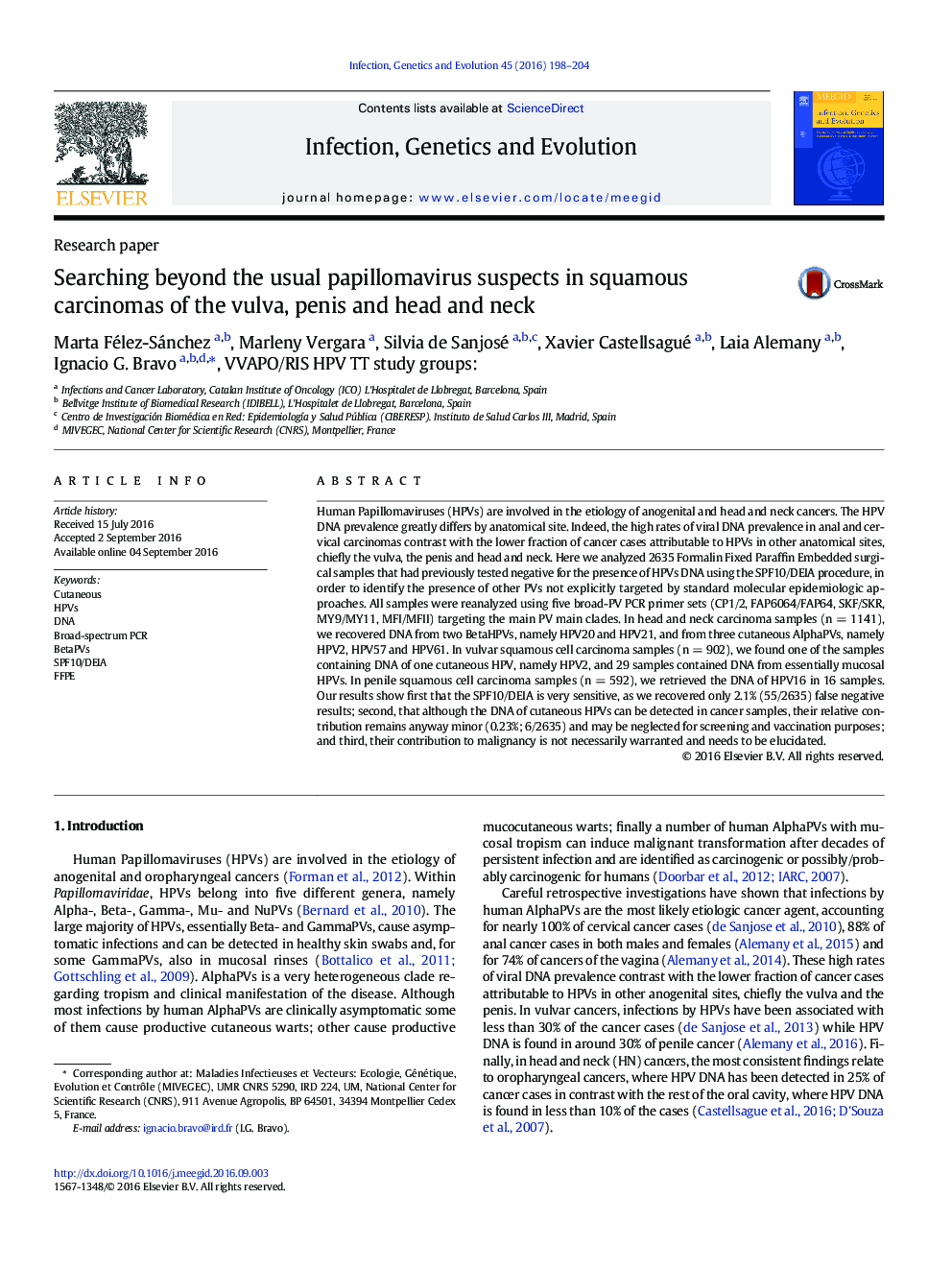| کد مقاله | کد نشریه | سال انتشار | مقاله انگلیسی | نسخه تمام متن |
|---|---|---|---|---|
| 2822871 | 1570158 | 2016 | 7 صفحه PDF | دانلود رایگان |
• Retesting of HPV-negative cancers tested with SPF10/DEIA shows only 2.1% (55/2635) false negative results.
• DNA of cutaneous HPVs within AlphaHPVs and BetaHPVs was found in a very low proportion of mucosal cancer samples (0.23%; 6/2635),
• The contribution to malignancy of cutaneous HPVs need to be elucidated although it remains minor.
Human Papillomaviruses (HPVs) are involved in the etiology of anogenital and head and neck cancers. The HPV DNA prevalence greatly differs by anatomical site. Indeed, the high rates of viral DNA prevalence in anal and cervical carcinomas contrast with the lower fraction of cancer cases attributable to HPVs in other anatomical sites, chiefly the vulva, the penis and head and neck. Here we analyzed 2635 Formalin Fixed Paraffin Embedded surgical samples that had previously tested negative for the presence of HPVs DNA using the SPF10/DEIA procedure, in order to identify the presence of other PVs not explicitly targeted by standard molecular epidemiologic approaches. All samples were reanalyzed using five broad-PV PCR primer sets (CP1/2, FAP6064/FAP64, SKF/SKR, MY9/MY11, MFI/MFII) targeting the main PV main clades. In head and neck carcinoma samples (n = 1141), we recovered DNA from two BetaHPVs, namely HPV20 and HPV21, and from three cutaneous AlphaPVs, namely HPV2, HPV57 and HPV61. In vulvar squamous cell carcinoma samples (n = 902), we found one of the samples containing DNA of one cutaneous HPV, namely HPV2, and 29 samples contained DNA from essentially mucosal HPVs. In penile squamous cell carcinoma samples (n = 592), we retrieved the DNA of HPV16 in 16 samples. Our results show first that the SPF10/DEIA is very sensitive, as we recovered only 2.1% (55/2635) false negative results; second, that although the DNA of cutaneous HPVs can be detected in cancer samples, their relative contribution remains anyway minor (0.23%; 6/2635) and may be neglected for screening and vaccination purposes; and third, their contribution to malignancy is not necessarily warranted and needs to be elucidated.
Journal: Infection, Genetics and Evolution - Volume 45, November 2016, Pages 198–204
